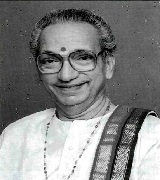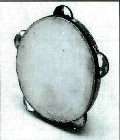Main Feature

Udupi Laxminarayanan
Udupi Laxminarayan, Bharatanatyam guru and choreographer and once a dancer as well, is not as prominent a figure as some of the other senior artists in the field of dance, but this is not for want of merit. He has a low profile partly because he has not bothered to publicise his dance accomplishments in the cinema and partly because he is not adept in the art of projecting himself. Patient probing reveals his considerable achievements as a lead dancer in dancedramas and other group presentations, as a composer of new items and as a pathbreaker or innovator within tradition. Closer to the surface is his guru bhakti, his warm and respectful regard for Kanchipuram Ellappa Mudaliar.
Special Feature

Music of Iran
The Hannana Orchestra from Iran performed earlier this year in Mumbai, under the aegis of t he National Centre for Performing Arts (NCPA) and the Music Forum. It was a short recital of an hour and included music, dance and poetry. Many in the audience found that the music featured elements very similar to Indian music in that the instruments resembled sarod, sitar, bansuri and daphli (daft) and that the tunes themselves sounded familiar. Perhaps this was something to be expected since some basic beliefs underlying the music of Iran are similar to some beliefs of classical Indian music. Iran or Persia, like much of the Islamic world, has had a war-like history but has in parallel developed poetry, architecture and carpet-weaving to a degree of aesthetic perfection unequalled anywhere else. As for music, it seems to have existed in very early times before the Islamic era. In common with die Arabs and the Kurds, ancient Persians possessed the kinnara or kitahara (harp) and the arghule (pipe-like folk instrument).
Special Feature

Sanskrit Cmpositions of Annamacharya
Annamayya is said to have authored a treatise in the form of a hymnody in Sanskrit, lyrical compositions entitled Sankeertana Lakshanam. Regrettably this is not available today, but fortunately its Telugu version, translated by his own grandson Chinna Tirumalayya is available and is titled Sankeertanala Lakshanamu. Another important Sanskrit work of Annamayya is Venkatachala Mahatmyam, the sthalapurana of Tirupati. Of the 14,358 pada-s of Annamacharya available today, only about a hundred are in Sanskrit. Out of these, only five or six are based on sringara. Does it mean Annamayya did not relish composing sringara songs in Sanskrit? The answer has to be a definite No considering he has praised Jayadevas ashtapadi-s.


